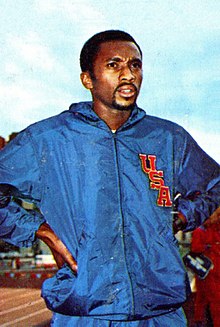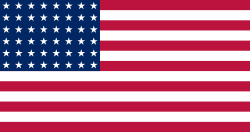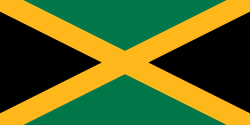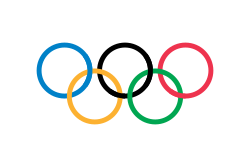Tommie Smith
| Tommie Smith | |
|---|---|
 | |
| Osobní informace | |
| Narození | 6. června 1944 (78 let) Clarksville |
| Stát | |
| Výška | 191 cm |
| Kariéra | |
| Disciplína | 200 m |
| Účasti na LOH | 1968 |
| Některá data mohou pocházet z datové položky. | |
| Přehled medailí | ||
|---|---|---|
| zlato | LOH 1968 Mexiko | běh na 200 m |
Tommie Smith (* 6. června 1944 Clarksville, Texas) je bývalý americký atlet, sprinter.
Kariéra
V roce 1967 vybojoval na světové letní univerziádě v Tokiu stříbrnou medaili v běhu na 100 metrů a zlato na dvojnásobné trati.
Mexico City 1968
Na Letních olympijských hrách 1968 v Mexiku získal zlatou olympijskou medaili v běhu na 200 metrů v tehdejším novém světovém rekordu 19,83 s.
Spolu s Johnem Carlosem v době, kdy byla hrána státní hymna USA a oba stáli na stupních vítězů, zdvihli zaťatou pěst s černou rukavicí na ruce a sklonili hlavu na znak utlačování černochů v USA. Oba za to byli posléze i vyloučeni z amerického týmu a opustili olympijskou vesnici.[1]
Rychlostní rekord
Tommie Smith v roce 1966 údajně zaběhl úsek posledních 20 yardů svého rekordního běhu na 220 yardů (201,17 m) za 1,53 sekundy, což odpovídá rychlosti 11,95 m/s (43,03 km/h). V té době to byl neoficiální rychlostní rekord.[2]
Odkazy
Reference
V tomto článku byl použit překlad textu z článku Tommie Smith na slovenské Wikipedii.
- ↑ Protest atletů se sevřenými pěstmi v Mexiku šokoval svět. ČT24 - Česká televize [online]. [cit. 2023-01-17]. Dostupné online.
- ↑ SOCHA, Vladimír. Vývoj rychlosti lidského sprintu. OSEL.cz [online]. 20. července 2018. Dostupné online. (česky)
Externí odkazy
 Obrázky, zvuky či videa k tématu Tommie Smith na Wikimedia Commons
Obrázky, zvuky či videa k tématu Tommie Smith na Wikimedia Commons - Tommie Smith na stránkách Světové atletiky (anglicky)
- Tommie Smith v databázi Olympedia (anglicky)
- http://www.pro-football-reference.com/players/S/SmitTo01.htm
- Video: finále běhu na 200 m (Mexico City 1968)
Média použitá na této stránce
Olympic Rings without "rims" (gaps between the rings), As used, eg. in the logos of the 2008 and 2016 Olympics. The colour scheme applied here was specified in 2023 guidelines.
Olympic Rings without "rims" (gaps between the rings), As used, eg. in the logos of the 2008 and 2016 Olympics. The colour scheme applied here was specified in 2023 guidelines.
US Flag with 45 stars. In use 4 July 1896–3 July 1908. Created by jacobolus using Adobe Illustrator, and released into the public domain. This flag was used during the Spanish-American War.
US Flag with 45 stars. In use 4 July 1896–3 July 1908. Created by jacobolus using Adobe Illustrator, and released into the public domain. This flag was used during the Spanish-American War.
US Flag with 48 stars. In use for 47 years from July 4, 1912, to July 3, 1959.
The Canadian Red Ensign used between 1921 and 1957.
This image has compared for accuracy (mainly colors) using an image from World Statesmen. The only change is making the maple leaves green from red. This image has compared for accuracy (mainly colors) using an image from World Statesmen. The most recent version of this image has changed the harp into one with a female figure; see [http://flagspot.net/flags/ca-1921.html FOTW
(c) I, Cmapm, CC BY-SA 3.0
The flag of the Soviet Union (1955-1991) using a darker shade of red.

(c) I, Cmapm, CC BY-SA 3.0
The flag of the Soviet Union (1955-1991) using a darker shade of red.

Flag of Jamaica. “The sunshine, the land is green, and the people are strong and bold” is the symbolism of the colours of the flag. GOLD represents the natural wealth and beauty of sunlight; GREEN represents hope and agricultural resources; BLACK represents the strength and creativity of the people. The original symbolism, however, was "Hardships there are, but the land is green, and the sun shineth", where BLACK represented the hardships being faced.
Olympijská vlajka
US Flag with 46 stars. In use 4 July 1908–3 July 1912. Created by jacobolus using Adobe Illustrator, and released into the public domain.
Other version: Image:US 46 Star Flag.svgCAMPIONI DELLO SPORT 1969/70-n.12- TOMMIE SMITH (USA)-ATLETICA LEGG













